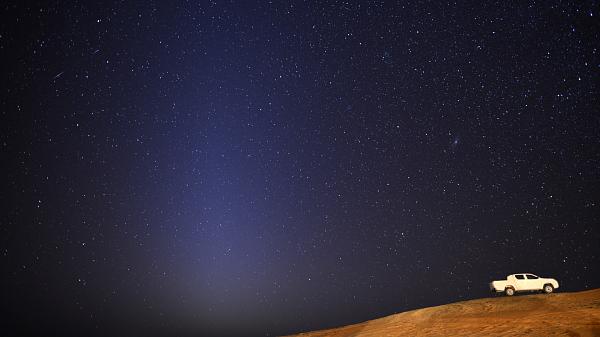What is Zodiacal Light or False Dawn?
Zodiacal light or false dawn is a rare optical phenomenon that occurs around sunset and sunrise, usually during early spring and late fall.

Zodiacal light intersecting the Milky Way near Black Mesa, Oklahoma. Zodiacal light is also known as false dawn.
©iStockphoto.com/andyKRAKOVSKI
It occurs in the form of a hazy light extending in the skies from the horizon, usually in the shape of a triangle or a pyramid.
Reflecting Sunlight
Zodiacal light occurs when sunlight reflects off tiny space particles. These particles or cosmic dust are considered to be fragments of Jupiter family comets and asteroid collisions. Jupiter family comets are comets that are found revolving around the Sun in a path between the Sun and Jupiter. These comets have a short revolution period, generally less than 200 years, and have their aphelia – the point where they are farthest away from the Sun – close to Jupiter.
While cosmic dust can be found throughout our Solar system, zodiacal light is mostly observed in the zone around the ecliptic plane.
When and Where to See Zodiacal Light?
Zodiacal light is rare and can be observed around the spring and the fall equinox at higher latitudes, and throughout the year in tropical regions.
Outside the tropics, you are the most likely to see this light after sunset during spring in the western sky and in the eastern sky before sunrise in the fall months.
Bright lights, artificial or natural, and air pollution are the biggest enemies of zodiacal light watchers. Because the light is very faint, any ambient light, even from the Moon, can hide them. The best time to observe them therefore, is around a New Moon.
False Dawn
Zodiacal light is especially significant for practitioners of the Islamic faith. Since zodiacal light is best observed right before sunrise, it can sometimes be mistaken as the beginnings of dawn. This has implications for devout Muslims who have to pray at specific timings. Prophet Muhammed is known to have used the zodiacal light to define the times of daily prayers.